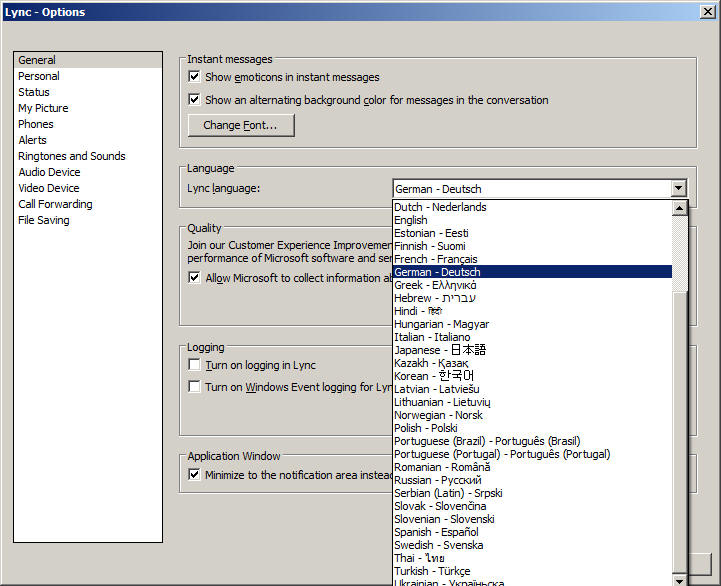

- LYNC FOR MAC 2011 HOTFIX UPDATE
- LYNC FOR MAC 2011 HOTFIX SOFTWARE
- LYNC FOR MAC 2011 HOTFIX ZIP
- LYNC FOR MAC 2011 HOTFIX DOWNLOAD
LYNC FOR MAC 2011 HOTFIX UPDATE

LYNC FOR MAC 2011 HOTFIX DOWNLOAD
Import the module by typing Import-Module ExchangeServices Download One thing to note: if you place the module in your personal modules folder, it will not show in the list when you run Get-Module -ListAvailable.
LYNC FOR MAC 2011 HOTFIX ZIP
In either case, unzip the contents of the zip file, including the folder, to the modules folder. Placing the module in there will make it available just to you. Something like C:\Users\administrator\Documents\WindowsPowerShell\Modules. The other path is to a subfolder of your My Documents folder. Placing the module in this location will make it available to everyone who uses that computer. One is to c:\Windows\System32\WindowsPowerShell\v1.0\Modules\. Note that it will generally include two paths. Open PowerShell and type $env:PSModulePath. Syntax Start-ExWindowsService ] ] Stop-ExWindowsService ] ] Get-ExWindowsService ] ] Set-ExWindowsServiceRecoveryOptions ] Installation And finally, Set-ExWindowsServiceRecoveryOptions sets all Exchange related services to automatically restart in the event of a service failure. Get-ExWindowsService, which will display all Exchange services and their status and startup type. Stop-ExWindowsService will stop all running Exchange services. Start-ExWindowsService, which will start any Exchange service that is not disabled and not currently running. Sure, you can manually type a PowerShell query each time, but why not convert that into some functions? I’ve created a module that has three functions in it. I’ve heard from a few Exchange guys who have said it would be nice if the Exchange guys had the same ability. This includes starting, stopping, and querying those services. To use AutoUpdate, open Microsoft Lync, and then on the Help menu, click Check for Updates.Being someone who’s converted from Exchange to Lync, I have the luxury of cmdlets for managing Lync services.
LYNC FOR MAC 2011 HOTFIX SOFTWARE
Note: This update is also available from Microsoft AutoUpdate, an application that can automatically keep your Microsoft software up to date. To remove the update installer, first drag the Microsoft Lync for Mac 2011 update volume to the Trash, and then drag the file that you downloaded to the Trash. If the installation finishes successfully, you can remove the update installer from your hard disk.In the Microsoft Lync for Mac 2011 Update volume window, double-click the Lync for Mac 2011 Update application to start the update process, and then follow the instructions on the screen.This step might have been performed for you. Double-click the file that you downloaded in step 5 to place the Microsoft Lync for Mac 2011 Update volume on your desktop, and then double-click the volume to open it.To check your preferences, on the Safari menu, click Preferences, and then click General. If you are using Safari, the downloaded file is saved to the desktop unless you specified a different location in the Preferences dialog box of Safari. Follow the instructions on the screen to save the file to your hard disk.



 0 kommentar(er)
0 kommentar(er)
